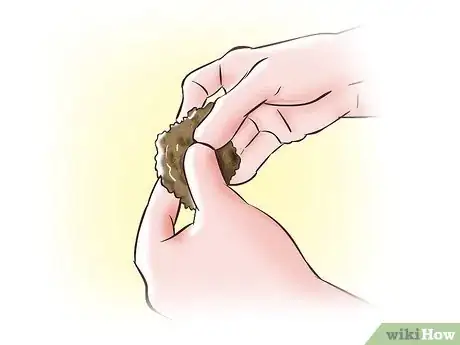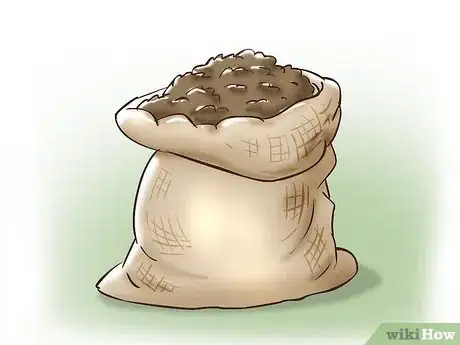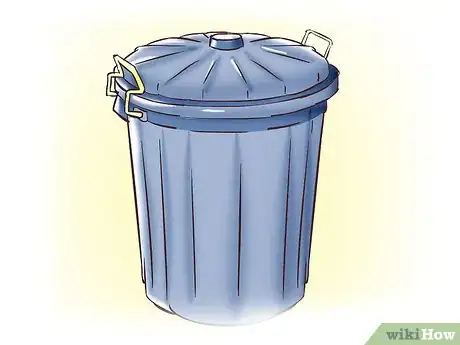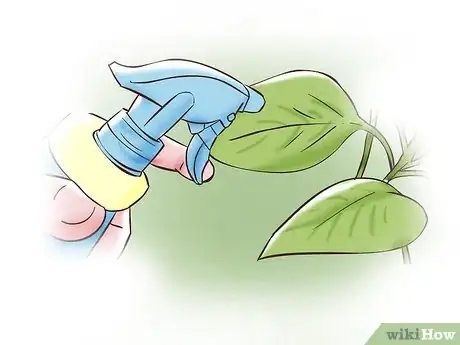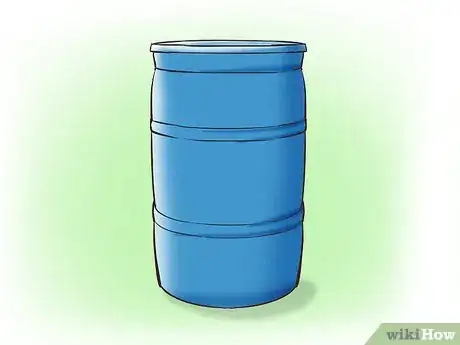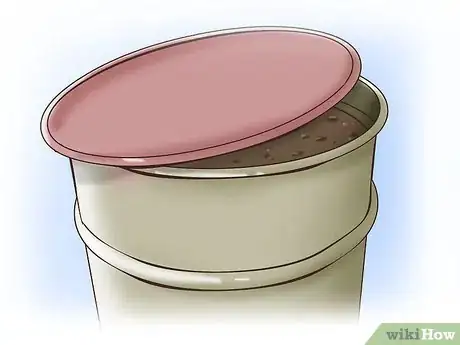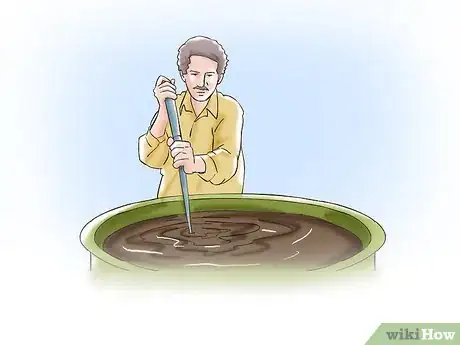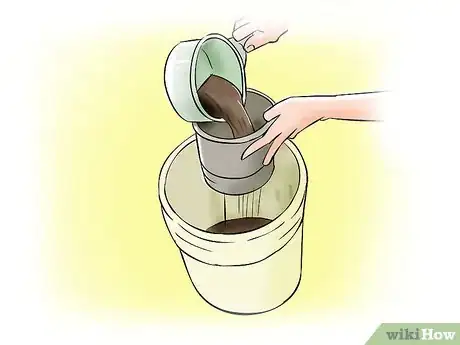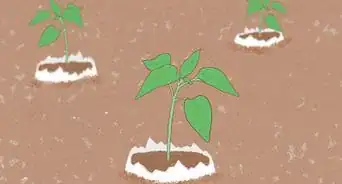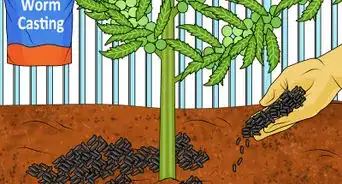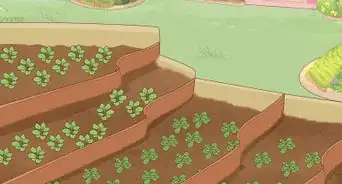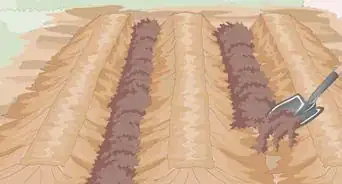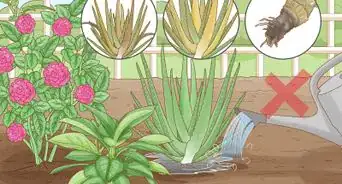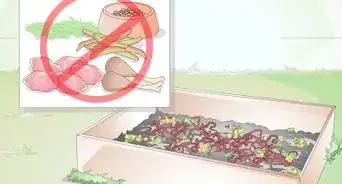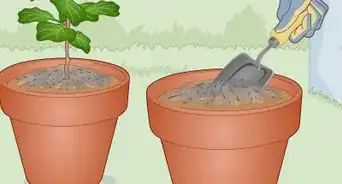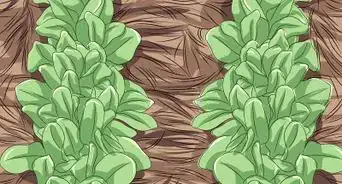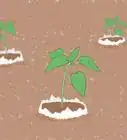wikiHow is a “wiki,” similar to Wikipedia, which means that many of our articles are co-written by multiple authors. To create this article, 9 people, some anonymous, worked to edit and improve it over time.
This article has been viewed 105,288 times.
Learn more...
Liquid manure is considered by some gardeners to be an effective way to supplement plants and soil with the beneficial nutrients found in the manure. Be aware that some organic gardeners tend to consider this an inferior product to aerobically created compost tea and for some organic gardeners, this is considered a breach of organic principles and organic certification rules but that's a personal choice if you're an individual gardener growing for yourself.[1] This article describes a few ways to use cow pats to create a liquid manure fertiliser.
Steps
-
1Handle with care. Place gloves on whenever handling manure from any livestock. Always create a barrier between your skin and the manure, to prevent the transfer of human pathogens. If you have immunity problems, you're pregnant, or unwell, do not handle at all and if you are concerned about inhaling pathogens, wear a mask as well.
-
2Place the container out of the way. The smell will be unpleasant to passers-by and it should be put away somewhere inoffensive such as a back shed or the back of the garden. Ensure that pets and children cannot get access to it. Tell other family members what you're doing and which container you're using so they don't gross out or make mistakes touching it, etc!
Hessian or net bag method (anaerobic)
-
1Gather some completely sun-dried cow pats. They should not be odorous and be completely dried out either from sunshine drying in the paddock or because you've purposefully strung them out to dry somewhere in the yard. Do not make this using liquid pats!
-
2Break the manure pats down into smaller pieces.
-
3Place the pieces into a net bag or a hessian sack.[2] The types of bags used for selling onions or oranges are ideal, provided they are large. Pack down well and fill it to the top.
-
4Hang this bag in a large garbage bin that is filled with water. Put the lid on to discourage flies and other unwanted visitors.
-
5Leave the bag there for three weeks. This will allow ample time for the manure to break down and be distributed through the water. During this time, dunk the bag up and down gently regularly to help distribute the contents as they break down.
-
6Use the liquid. Once the three weeks have passed, use the liquid fertiliser on your plants. It must be diluted first - the dilution should be nine parts water to one part liquid manure. This fertiliser is suitable for most plants, even seedlings, provided it is diluted.[3]
Another anaerobic method
This method is based on Tim Marshall's method in Composting[4]
-
1Use a drum, bucket, or other suitable container. It must have a lid or a makeshift lid.
-
2Place the dried-out cow manure (or fish waste) into the container. Place in to about one-third of the container's height.
-
3Fill the rest of the container with water.
-
4Cover the container. This keeps out the flies and other pests.
-
5Stir the mixture once every three days. Or, stir once a day for the first three days and then only stir weekly.
-
6Leave until the smell dissipates. Once it doesn't smell anymore, it is ready for use. The odor may be smelly over the container itself but the ammonium odor should be completely gone. If not, leave longer until it has gone.
-
7Use. The liquid manure so made must be diluted before use. Place into a watering can, spray bottle, or in a dripper system. The application depends on the plants and their needs:
- Heavy feeders need more.
- Apply very diluted once a week or a less dilute one every two or three weeks.
Community Q&A
-
QuestionHow quickly should it be used?
 NinoxTop AnswererThe manure can be used as long as you protect it from the flies and other bugs.
NinoxTop AnswererThe manure can be used as long as you protect it from the flies and other bugs. -
QuestionTo what ratio should this be diluted?
 Community AnswerSix or seven percent manure to water is a good ratio, and you could effectively use up to 10 percent manure.
Community AnswerSix or seven percent manure to water is a good ratio, and you could effectively use up to 10 percent manure. -
QuestionHow much water should be put in the garbage can?
 NinoxTop AnswererFor a onion bag of pats, you need roughly 80 L of water.
NinoxTop AnswererFor a onion bag of pats, you need roughly 80 L of water.
Warnings
- Do not use this solution in its strong, undiluted form or you may end up over-fertilising and having the same problems as using chemical garden preparations.⧼thumbs_response⧽
- As stated in the body of the article, take the appropriate handling precautions to prevent the transfer of potential human pathogens from the manure to you or others gardening. Wash all edible plants well that have been nurtured using this method.⧼thumbs_response⧽
- Avoid overusing this; doing so can add high levels of nitrogen that will disrupt soil development and breach organic nutrition.[5]⧼thumbs_response⧽
Things You'll Need
- Gloves for handling the cow pats; mask if needed (extra precaution)
- Large onion or orange net bag (commercial size) or a hessian sack
- Large garbage/rubbish bin, plastic or steel, plus lid
- Bucket or other large container for diluting and jug for removing liquid from bin
- Spray bottle, watering can, etc., for distribution
References
- ↑ Tim Marshall, Composting, p. 69, (2008), ISBN 978-0-7333-2416-1
- ↑ https://www.abc.net.au/gardening/factsheets/good-brew/9525034
- ↑ https://www.growveg.com/guides/making-homemade-liquid-fertilizers/
- ↑ Tim Marshall, Composting, p. 69, (2008), ISBN 978-0-7333-2416-1
- ↑ Tim Marshall, Composting, p. 69, (2008), ISBN 978-0-7333-2416-1



